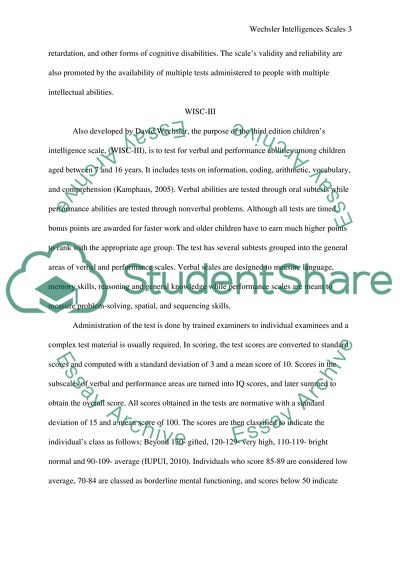The Wechsler Intelligence Scales Research Paper. Retrieved from https://studentshare.org/education/1441742-the-wechsler-intelligence-scales
The Wechsler Intelligence Scales Research Paper. https://studentshare.org/education/1441742-the-wechsler-intelligence-scales.


